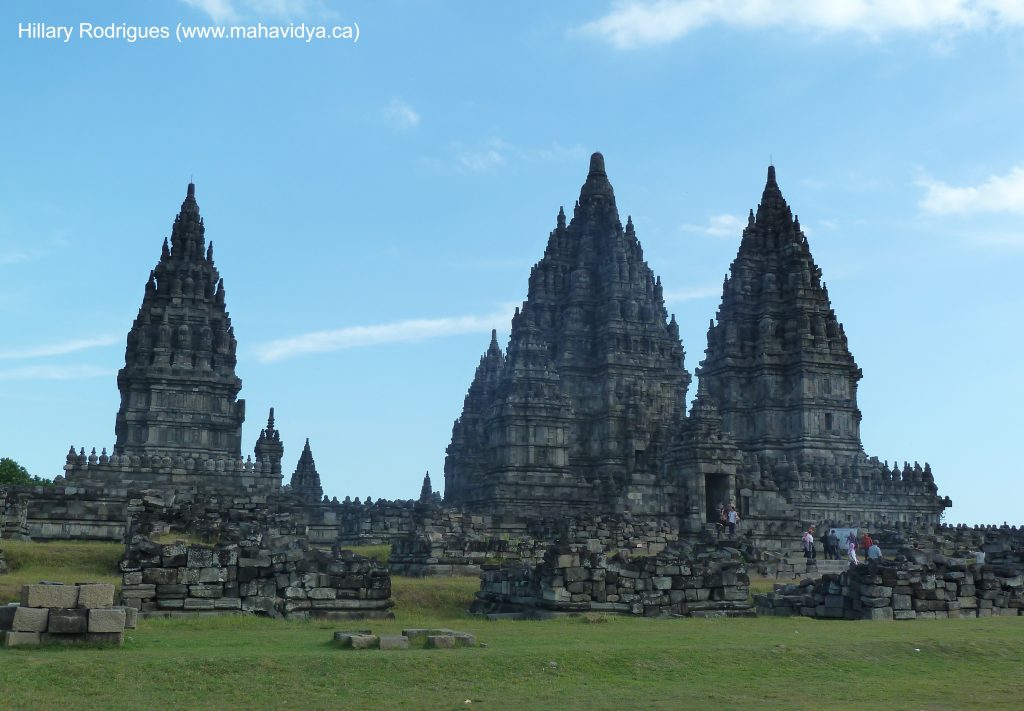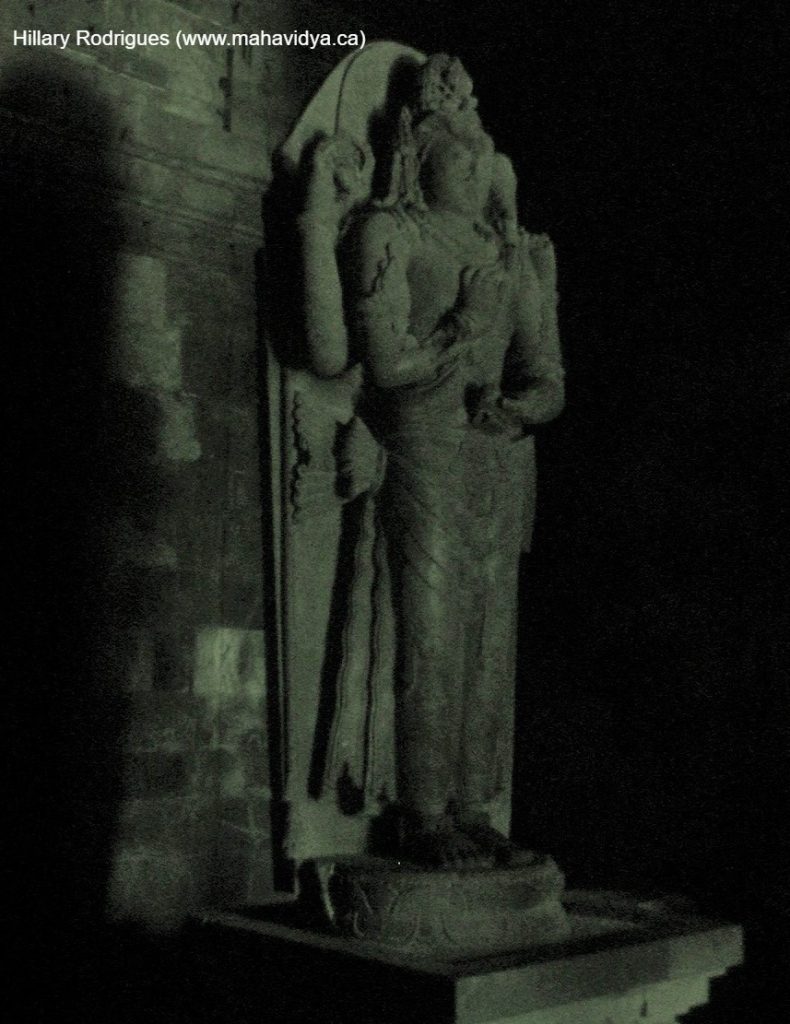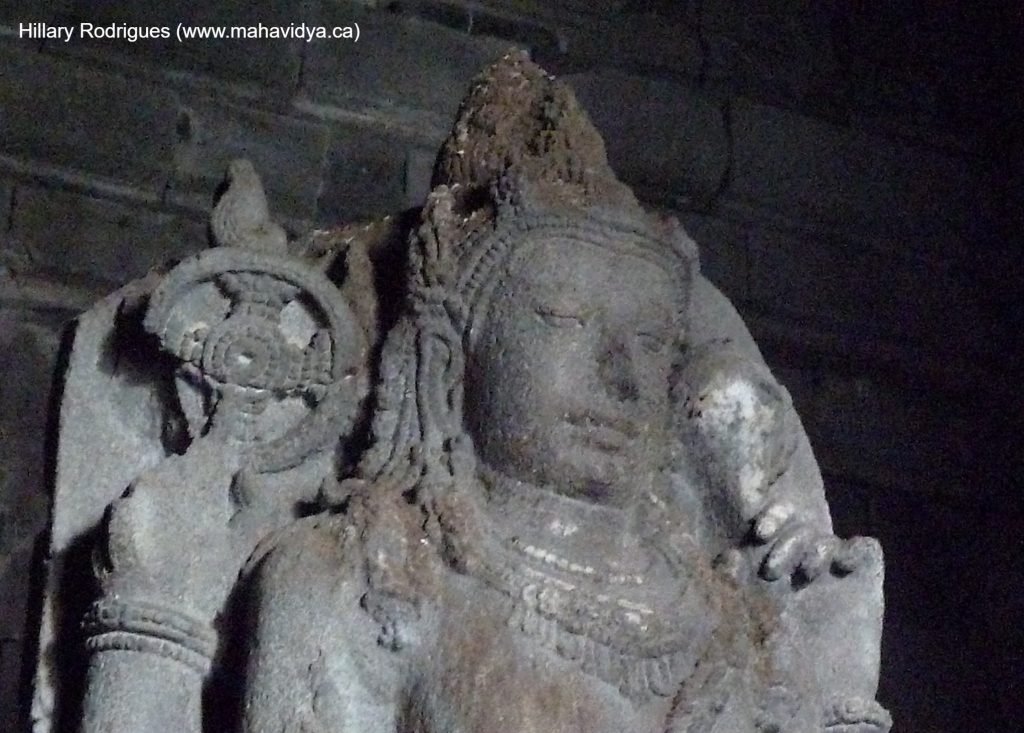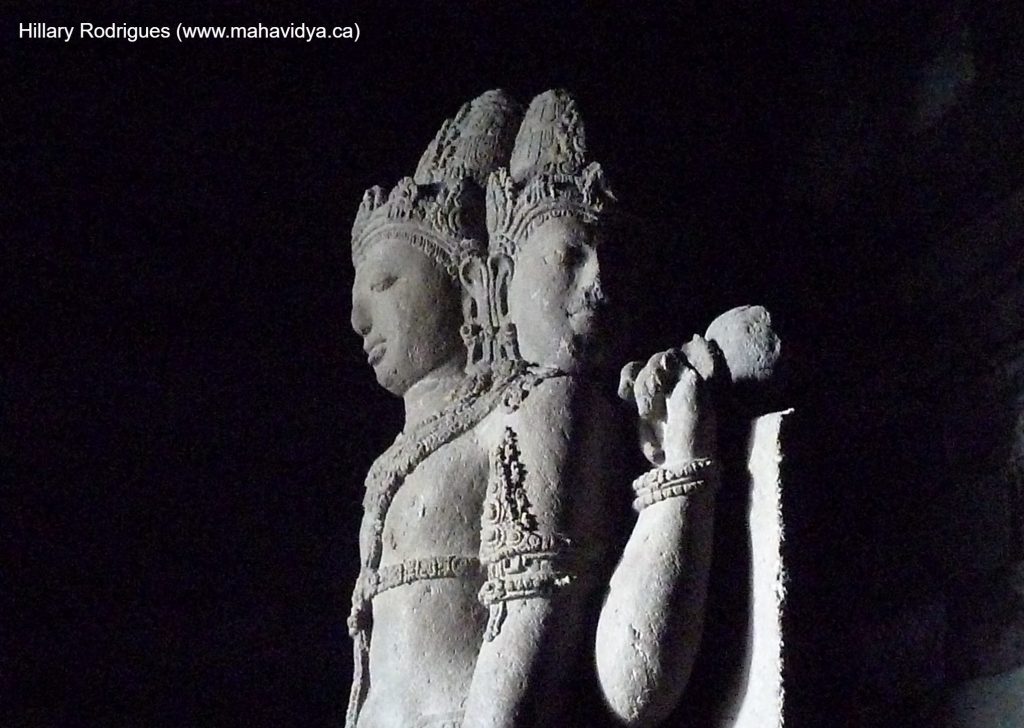
Prambanan, located in the special district (daerah istimewa) of Yogyakarta, Indonesia, is a complex of temples dedicated to the Hindu Trimurti. Also known as Candi Prambanan or Lara Jonggrang, this complex is Hinduism’s largest site of temples in Indonesia (Bhargava 1440). Prambanan gets its name from its proximity to a nearby village. The name Lara Jonggrang directly translates to “slender maiden” and refers to the statue of Durga, the wife of Siva, within the temple (Levy 2018). Prambanan was designated a UNESCO world heritage site in 1999.
Prambanan’s history dates to around 850 CE when Rakai Pikatan, a king of the Sanjaya dynasty Medang Kingdom, built the first temple on the site. The site was later drastically expanded by Dyah Lokapala and Balitung Maha Sambu, the Sanjaya king of the Mataram Kingdom (Bhargava 1440). With Prambanan being the center of most of the Mataram Kingdom’s sacrificial ceremonies (yajnas), it is believed Prambanan was the Mataram Kingdom’s royal temple. At the height of the Mataram Kingdom, Prambanan was home to many brahmins. Prambanan’s original name was Siwagrha, the house of Siva, and was originally designed to imitate Siva’s home, Mount Meru (Bhargava 1441). According to the Shivagrha Inscription of 856 CE, the temple was also dedicated to Siva.
Contemporary political perspectives suggest the construction and subsequent expansion of Prambanan was in response to the completion of Borobudur, a massive nearby Buddhist complex. Borobudur is Java’s largest Candi, or complex of temples, attributable to the Buddhist dynasty of Sailendra (Lanti 429-430). Contemporary thought also hypothesizes Prambanan’s construction to have been made in celebration of Hindu rule returning to Java following the fall of the Sailendra Dynasty (Lanti 430).
According to Prambanan’s entry on UNESCO, as well as discussed by Jordaan, Prambanan was abandoned sometime between the tenth and eleventh century for a multitude of hypothesized reasons (Jordaan 20). It is suggested that a combination of natural disasters and a shift in political power pushed life in Prambanan to eastern Java, leaving Prambanan behind to decay (Jordaan 20). Prambanan was not rediscovered until the early nineteenth century when Lieutenant-Governor Raffles’ team came upon the temples by chance (Bhargava 1440). It is possible that when C.A. Lons toured Javanese temples in 1733, he could have possibly included Prambanan in his description of overgrown temples (Jordaan 13). However, it is generally agreed that Raffles takes the honour of discovering Prambanan.
Though it was discovered, and a full survey was commissioned, Prambanan was not cared for properly, with locals taking what they needed from the site without consideration for Prambanan’s preservation (Bhargava 1440). Furthermore, the first archeologist to lay his hands on the excavation process was J. W. IJzerman, an engineer and chair of the local amateur archeological association (Jordaan 14). He did so with poor methods by today’s standards and as such, lost important and irretrievable information (Jordaan 14). Even worse, the successor of the operations, Groneman, saw it fit to dispose of a substantial portion of Prambanan’s excavated rubble into the nearby river (Jordaan 15). This rubble included a considerable number of fragments of reliefs and statues from various parts of Prambanan (Jordaan 15). Due to this irreversible loss, scholars at the time considered reconstruction an impossibility (Jordaan 15). Thankfully the magnitude of loss was less than anticipated and in 1918, reconstruction on the main temple dedicated to Siva commenced (Jordaan 16). The main temple’s reconstruction finished in 1953 while ongoing reconstruction and restoration of Prambanan continues to this day (Kempers 197).
Prambanan consists of roughly two hundred and forty temples. Soekmono provides a physical description of Prambanan: “The complex consists of more than 200 shrines of varying sizes, distributed over 2 concentric square courtyards enclosed by walls with gateways on all 4 sides. The inner courtyard is 100 m square and contains the main shrines of the compound. The outer courtyard is 200 m square and contains subsidiary temples built on four tiered platforms that descend gradually from the walls of the central square. The entire compound is enclosed by a further, lower-lying square of 365×365 m, the walls of which are not parallel to the other two enclosure walls” (Soekmono 1). Located in the inner courtyard, there are three major temples dedicated to Siva, Visnu and Brahma, as well as three temples parallel with the three major temples, which are referred to as the vahana temples (UNESCO). The word vahana roughly translates to “mount,” meaning each of these temples are believed to have housed worship to each respective member of the Trimurti’s mount. However, evidence of such worship and dedication to the respective mounts is only found in Siva’s opposing temple (Kempers 193). It is believed that the temple opposite of Siva’s temple is for Nandi, the bull (Kempers 193). The other two temples are referred to as A and B, as there is no evidence of either Brahma’s or Visnu’s vahana in their respective opposing temple.

The temple dedicated to Siva stands the tallest measuring in at forty-seven meters. Within the temple dedicated to Siva there are five chambers, four of which are in each cardinal direction while the last is in the middle, accessed via the eastern chamber (Jordaan 5). Within the eastern chamber lies a statue of Siva in his four-armed form. In the southern chamber there is a statue of Agastya, a revered Vedic sage and avatar of Brahma. In the western chamber is a statue of Siva’s elephant son, Ganesa. Lastly, in the northern chamber is the previously mentioned statue of Durga, depicted as the demon buffalo slayer, also referred to as Lara Jonggrang (Kempers 197). This statue gave rise to Javanese folktales surrounding the lore of the statue (Jordaan 12). It is said that long ago a war broke out between the kingdoms of ogre king Ratu Boko and neighbouring Pengging. Following king Ratu Boko’s defeat, a Pengging warrior named Bandung Bandawsa fell in love with Ratu Boko’s human daughter, Lara Jonggrang. After countless proposals of marriage, Lara gave in on one condition – Bandung Bandawsa would construct a complex of a thousand temples in one night. Being the warrior he was, Bandung accepted and began to summon spirits to aid him in his efforts. As the night progressed, Lara came to realise Bandung may complete the task. To fool him and his peons, Lara constructed a fire in the east, giving the illusion the sun was rising. As well, she rounded up all the women she could and began morning practices. When Bandung’s assistants heard the women preparing for the day and saw the “sun” was rising, they fled in fear of the light. Having completed only nine hundred ninety-nine temples (today’s Sewu), Bandung had failed. Upon finding out about Lara’s ploy, Bandung cursed her into becoming part of the thousand requested temples: she became the statue of Durga to be found in Siva’s temple. Also found within Siva’s temple, which spreads into Brahma’s temple, are bas-reliefs depicting scenes from Indonesia’s take on one of the great Hindu epics, the Ramayana.

To the north and south of Siva’s temple are two twin temples, both with only one room (Jordaan 7). To the south is Brahma’s temple; to the north is Visnu’s temple. Within both temples, a statue of either Brahma or Visnu can be found which is what gave rise to each temple’s association with their respective god. On the walls of Brahma’s temple is the continuation of the Ramayana from Siva’s temple. Carved into the walls of Visnu’s temple is the story of Krsna as the hero of the Mahabharata (Jordaan 7).

Along with the six previously mentioned temples that fill the center of Prambanan are two apit temples or “flank” temples, the use of which is yet to be determined. They are positioned at the north and south entrances of the square and they face the center of the square, to cover the main six temple’s “flanks” (Jordaan 7). In the outer courtyard, remains of some two hundred smaller subsidiary temples reside, all of which are similar in make and decoration (Jordaan 9). In the further, lower lying square no remanence of temples have been found. It is hypothesized this was the area used to accommodate those practicing within Prambanan (Jordaan 9).
References and Further Recommended Readings
Bhargava, P. (2012) “Prambanan: A group of hindu temples in central java.” Proceedings of the Indian History Congress 73:1440-1441.
Jordaan, R. (1996) “Candi Prambanan; An Updated Introduction.” In Praise of Prambanan: 3-116. Leiden: Brill.
Kempers, Bernet (1996) “Prambanan 1954” in Praise of Prambanan: 191-226. Leiden: Brill.
Lanti, Irman G. (2002) “Candi of Java.” Encyclopedia of Modern Asia: 429-430. Great Barrington: Berkshire Publishing Group.
Levy, Michael (2018) “Prambanan.” Encyclopædia Britannica. Accessed on October 28th, 2018.
Soekmono, R. (2003) “Loro Jonggrang.” Oxford University Press. Accessed October 29th, 2018.
Unesco.org. (1991) “Prambanan Temple Compounds.” Unesco. Accessed October 28th, 2018.
Related Topics for Further Investigation
Durga
Candi
Laksmi
Sarasvati
Ganesa
Sewu
Borobodur
Ramayana
Mahabharata
Siva
Nandi
Hinduism in Java
Noteworthy Websites Related to the Topic
https://en.wikipedia.org/wiki/Prambanan
https://whc.unesco.org/en/list/642
http://www.accessibleindonesia.org/legend-lara-jonggrang/
https://en.wikipedia.org/wiki/Borobudur
http://www.ils.fr/candi/indonesie/candi_E.htm
Article written by: Nick Davis (October 2018) who is solely responsible for its content.